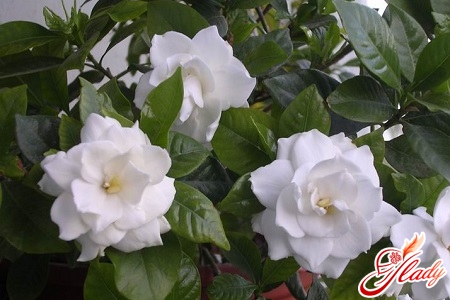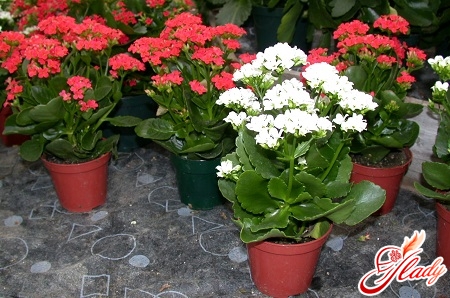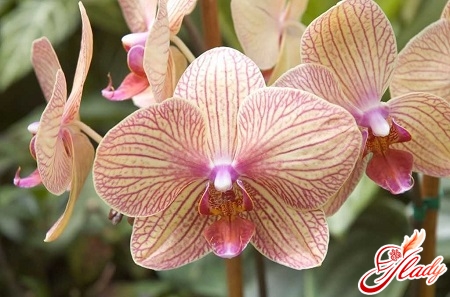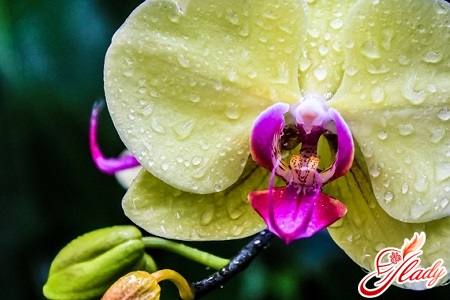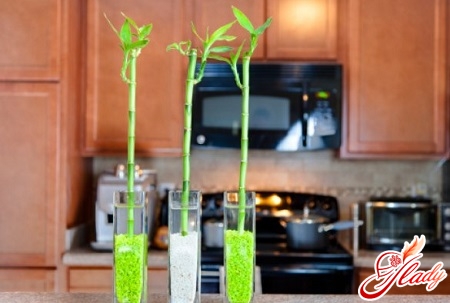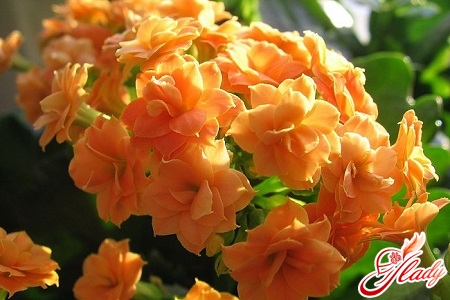 There lives in our houses one amazing guest fromSouth Africa, and its name is Kalanchoe. There are about 200 species of this amazing plant. Among them are viviparous and decorative-deciduous species. Some species are very successfully used in folk and traditional medicine (especially in cosmetology and for the treatment of colds) And all thanks to the bactericidal properties of the flower. Today we will talk about one of the most common species of this plant - Kalanchoe daigremona. It is often confused with a very close relative - pinnate Kalanchoe, although such confusion is practically not reflected in the conditions of maintenance.
There lives in our houses one amazing guest fromSouth Africa, and its name is Kalanchoe. There are about 200 species of this amazing plant. Among them are viviparous and decorative-deciduous species. Some species are very successfully used in folk and traditional medicine (especially in cosmetology and for the treatment of colds) And all thanks to the bactericidal properties of the flower. Today we will talk about one of the most common species of this plant - Kalanchoe daigremona. It is often confused with a very close relative - pinnate Kalanchoe, although such confusion is practically not reflected in the conditions of maintenance.
Appearance
Kalanchoe has gained its popularity not onlybecause of its unpretentious conditions of maintenance, but also due to its amazing method of reproduction. This flower grows up to half a meter in height. Its leaves are fleshy and oblong, with serrated edges. In the depressions between the teeth there are brood buds, from which babies are formed. They grow directly on the mother plant and have their own roots. If such a baby gets to the soil, it immediately takes root and a young flower begins to develop. This type of Kalanchoe has one single stem, which does not give branches. Depending on the conditions of maintenance, the leaves of the Degremon can reach 24 centimeters in length. They are shiny, rich green with a slight blue. In a completely healthy plant, the leaves grow strictly upward, and the serrated edges are slightly curled inward. The trunk of the Kalanchoe is quite fragile and needs support, over time, the lower leaves tend to fall off, as a result of which the trunk becomes bare.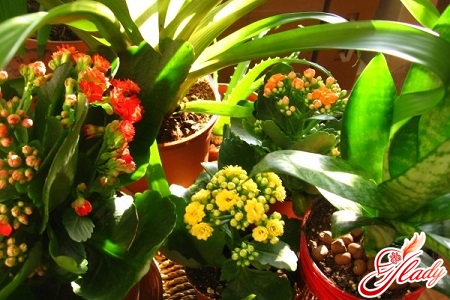
Features of care and cultivation
Overall, this is an unpretentious plantneeds special care. Considering that the homeland of Kalanchoe is still the tropics, it loves well-lit and ventilated places. But at the same time, it is advisable to avoid direct sunlight. Diffused light is much better for this species, otherwise the leaves will acquire a dark color with a reddish tint, and the plant itself will begin to dry out. The optimal daytime temperature is 20-23 degrees, at night a decrease in temperature is allowed within reasonable limits. In winter, the ambient temperature should not fall below 15 degrees. Kalanchoe loves ventilation, but does not tolerate a cold draft, so it must be kept in appropriate conditions. In summer, a pot with a plant can be safely placed in the garden or on an open veranda - it will definitely like it there. However, during rain or fog, the flower is better brought into the house. Watering and fertilizing During the period of active growth, which occurs in the warm season, watering should be moderate. You should not allow the soil in the pot to dry out excessively, but there is no need to water it diligently either. Make sure that the soil is quite dry before watering. You can feed the plant in spring and summer. One feeding per month with any universal fertilizer for succulents is enough. In the cold season, Kalanchoe degremona does not need additional feeding. Transplantation Young plants are transplanted annually. The pot is selected in accordance with the size of the plant, usually it is 1-2 centimeters larger than the previous one. As a soil, you can either buy a regular mixture for succulents, or make the necessary mixture yourself. For this you will need:
- 1 part of sod land;
- 1 part leaf;
- 1 part peat;
- 1 part of crumb of sand and expanded clay.
You can also add a little brick to the soil.crumbs and birch coals. Later, the plant is replanted when it reaches a height of 40-50 centimeters. At this time, it loses its attractiveness, the top is usually cut off and rooted in a new pot. Reproduction The flower will do almost all the work on reproduction on its own. Young shoots are on the mother plant for several weeks, then they fall to the ground, where they take root on their own. At this time, it is advisable to collect them, but you can also leave them. Then several growing Kalanchoe will look more picturesque. You should not get rid of all the young shoots. Old plants very quickly lose their attractiveness as they grow, they will still have to be periodically updated. Does Kalanchoe degremona bloom? Very few people know that this type of Kalanchoe also blooms. And, nevertheless, adult plants can please their owners with flowers in early autumn or winter. The inflorescences are tubular flowers of orange or pink color, which rise above the leaves in the form of a crown. Sometimes the peduncles can grow up to 30 centimeters in height. During flowering, be sure to take care of the support. For flowering, the plant needs a long night and a short day. If you create such conditions, the plant will bloom again, but keep in mind that with a lack of light, Kalanchoe tends to stretch out a lot. Possible problems The appearance of dry brown spots on the leaves indicates that the plant is kept in a cold and damp room, and the appearance of gray mold indicates excess moisture and heat. Kalanchoe is often affected by aphids, which can be removed with the help of various preparations sold in stores. You can also resort to folk methods, for example, treat the plant with a soap solution. After a day, the solution must be washed off, be sure to cover the soil with polyethylene. If you have just noticed the appearance of aphids, it is enough to wipe the leaves of the plant with a damp sponge.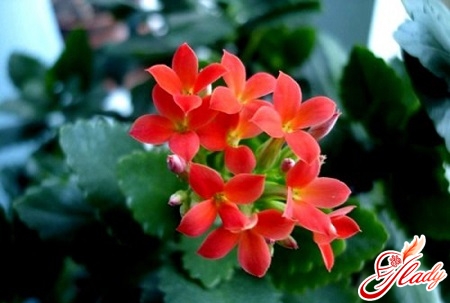
The Benefits of Plants
In the conditions of urban life we are constantlypursues vitamin deficiency. It is suggested to fight it with the help of numerous vitamin and mineral complexes. But if Kalanchoe degremona lives in your house, the problem of vitamin deficiency is solved automatically. The leaves of the plant are a real storehouse of useful substances. They contain flavonoids, polysaccharides, and a lot of minerals, and organic acids. Therefore, knowledgeable people eat the leaves of this flower. It is enough to thoroughly wash the leaf and cut it into small pieces - a great addition to any salad is ready. It is especially recommended to use this plant for those who suffer from periodontal disease and gingivitis. The substances contained in it reduce bleeding gums, remove inflammatory processes of the mucous membrane and have a beneficial effect on the condition of the oral cavity as a whole. As a preventive measure against gum diseases, you can spray your mouth with Kalanchoe juice. To do this, the lower leaves of the plant are torn off, washed thoroughly and cut into small pieces. The juice is squeezed through several layers of gauze or simply through a thick cloth. Irrigation is done in the morning and evening - after brushing your teeth. Ideally, fresh juice should be prepared before each procedure. But these are not all the beneficial properties of Kalanchoe. In addition, it is an excellent "biostimulator". A few drops of juice are enough and, perhaps, the next flu season will pass without you. To prepare a preventive remedy, you need to cut off the Kalanchoe leaves and keep them in the refrigerator for two weeks. Under such conditions, the plant produces unique substances that can activate many vital processes in the body. Now you need to squeeze the juice from the leaves, as described above, and use it as needed. Now you know how to grow Kalanchoe degremona. If you follow the simple recommendations described in this article, a healthy and beautiful plant will settle in your home, which will not only decorate the room, but will also become a home doctor in many situations.




